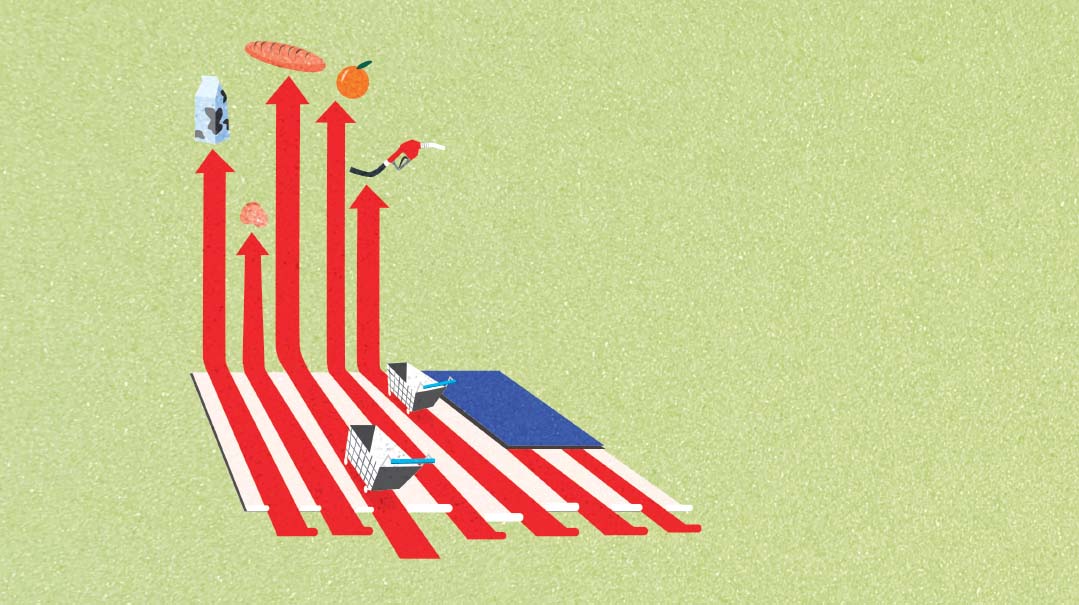Inflation Nation
| November 16, 2021When economies in the developing world run up against spiraling inflation, the international monetary authorities always advise austerity — cutting back on the money supply, and cutting back on government spending

On a bustling Thursday afternoon at a popular Tristate-area supermarket, shoppers filled their carts with items one might find on any frum housewife’s list: packages of trim sliced chicken cutlets, Kedem Grape Juice, one-pound packages of cholent mix, half-gallon containers of skim milk, a small, mild jalapeño dip.
But shoppers are finding the experience has changed in the last two years, or even the last two months — with prices going up, they’re having to pay a lot more attention to the running tab.
“People are buying less,” says Zeke Kreitner, general manager and purchaser at Seasons Kosher supermarket, “and we’re noticing that our customers are focusing more on necessities, and not spending on luxuries as much as they used to.”
Even after shoppers pare down to the minimum, their grocery bills are significantly up since the beginning of this year. It’s a phenomenon not unique to the frum market. According to national estimates, the average American family saw their grocery bills increase by $175 a month since the start of the current economic crisis, the steepest price hikes in over 30 years.
With inflation hitting a 31-year high this past week, a labor shortage threatening an already broken supply chain, a still-unpredictable virus wreaking havoc on global markets — with governmental actions taking as high a toll as the pandemic itself — consumers and proprietors alike have been feeling the squeeze on their bottom lines.
The US Labor Department reported that the consumer price index — commonly called the CPI, which measures what consumers pay for goods and services — increased in October by 6.2 percent from a year ago. That was the fastest 12-month pace since 30 years ago. Even more worrying, according to some economists, was the duration; it was the fifth straight month that inflation exceeded 5 percent.
Inflation (defined as “a general increase in prices and fall in the purchasing value of money”) had lately not intruded too much in the mind of the average consumer, instead primarily concerning think tanks and academics who pored over complex indices and indicators generated by economists at the Federal Reserve in Washington, D.C.
But today, everyone is feeling the bite. And the rising prices aren’t just hitting one sector of the market — they’re climbing across the spectrum, affecting clothing, computers, cars, and everything else. Gas is at its highest price in seven years, and recently, even the Dollar Tree retail chain — so named for its variety of products costing a dollar — has begun opening “Dollar Tree Plus” outlets, offering products priced at $3 and $5.
“What we’re seeing now is far more drastic than your average inflation factors,” explains Professor Meyer Peikes, chair of the undergraduate accounting and business department at Touro College.
Oops! We could not locate your form.





